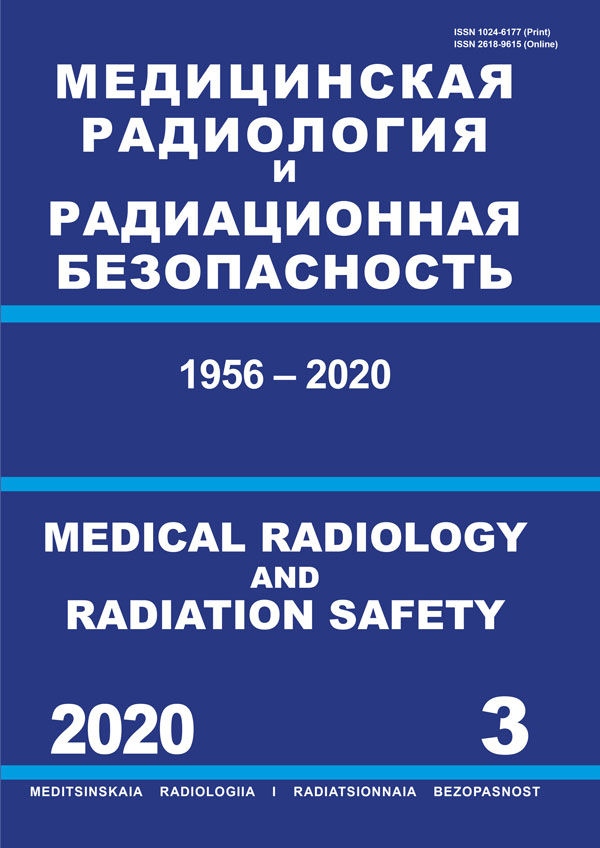Russian Federation
Russian Federation
Russian Federation
Russian Federation
Purpose: To analyze the incidence of occupational diseases of employees of factories and organizations in State Corporation «Rosatom». Material and methods: The study was conducted with the use of primary documents, containing information about the diseases and working conditions in the workplace. The calculation of this indicator is based on the standard and original software. Results: In 2014 leading position among professional pathologies adhesive capsulitis of the shoulder (26.1 %), a number enthesopathies (13.4 %), lateral and medial epicondylitis (4.2 % and 0.8 %, respectively) occupy. Pathologies associated with decrease in hearing (9.2 %). Cancers of the respiratory system, as well as malignant neoplasms unspecified localization (5.9 %). In the structure of occupational diseases employees from 50 to 59 years (36.9 %) is dominated; the lowest level of occupational diseases in the group under 39 years (5.9 %). 68.9 % of employees , registered in 2014, were over the age of 50. For the 2010–2014 long-term dynamics of occupational diseases shows its growth from 1.6 cases per 10,000 employees (2010) to 4.5 cases per 10,000 employees (2014). The negative long-term dynamics (2010–2014) observed for occupational diseases of the musculoskeletal system and connective tissue (from 0.1 to 2.57 cases per 10,000 employees), vibration disease (from 0.7 to 0.9 cases per 10,000 employees), malignant neoplasms (from 0.2 to 4.2 cases per 100,000 employees). Conclusion: During 2010–2014 there was an increase of the incidence, mainly due to professional pathology of the musculoskeletal system and connective tissue, cases of vibration disease and malignant neoplasms. The highest morbidity rate of professional diseases was observed in workers of Priargunsky Industrial Mining and Chemical Union.Analysis of the data showed that the greatest number of diseases was revealed at persons in the age range 50–59 years old.
occupational diseases, industry register, risk factors, the structure of occupational diseases
В настоящее время количество работающих в не- благоприятных условиях с потенциальным риском развития профессиональных и профессионально обусловленных заболеваний оценивается в 17 млн чел., что составляет 36,8 % от всего работающего населения РФ.
1. sostojanii professional’noj zabolevaemosti v Rossijskoj Federacii v 2010 godu. Informacionnyj sbornik statisticheskih i analiticheskih materialov / Pod red. A.I. Vereshhagina. - M.: Federal’nyj centr gigieny i jepidemiologii Rospotrebnadzora, 2011, 110 s.
2. realizacii gosudarstvennoj politiki v oblasti uslovij i ohrany truda v Rossijskoj Federacii v 2013 godu. Min. truda i soc. zashhity RF/ www.rosmintrud.ru/docs/.../15/doklad_TEKSTOVAYa_ CHASTY.doc.
3. Godovoj otchet Gosudarstvennoj korporacii po atomnoj jenergii «Rosatom» za 2013 g. (utv. nabljudatel’nym sovetom Gosudarstvennoj korporacii po atomnoj jenergii «Rosatom» 26.06.2014 g.) // http://www.rosatom.ru/resources/ 37117a0044 94c2369041b0e920d36ab1/ rosatom_ anrep_2013.pdf.
4. Gosudarstvennaja programma RF «Razvitie atomnogo jenergopromyshlennogo kompleksa» (utv. Postanovleniem Pravitel’stva RF ot 2.06.2014 g. № 506-12)// http://government. ru/docs/12959/
5. Federal’nyj zakon Rossijskoj Federacii № 426-FZ ot 28 dekabrja 2013 g. «O special’noj ocenke uslovij truda» // http://www. rg.ru/2013/12/30/ocenka-dok.html.
6. Sajt Priargunskogo proizvodstvennogo gorno-himicheskogo ob#edinenija (PAO «PPGHO») // http://www.priargunsky.armz. ru/.
7. Sajt «Rosjenergoatom. Jelektrojenergeticheskij divizion Rosatoma» // http://www.kolanpp. rosenergoatom.ru/about/ press-center/news/3c8b4c80482dfbd49134dd94f9d71864.
8. Murata M., Miyake T., Inoue Y. et al. Life-style and other characteristics of radiation workers at nuclear facilities in Japan: base-line data of a questionnaire survey // J. Epidemiol. 2002. Vol. 12. № 4. P. 310-319.
9. Zielinski J.M., Shilnikova N.S., Krewski D. Canadian National Dose Registry of radiation workers: overview of research from 1951 through 2007. // Int. J. Occup. Med. Environ. Health. 2008. Vol. 21. № 4. P. 269-275.





